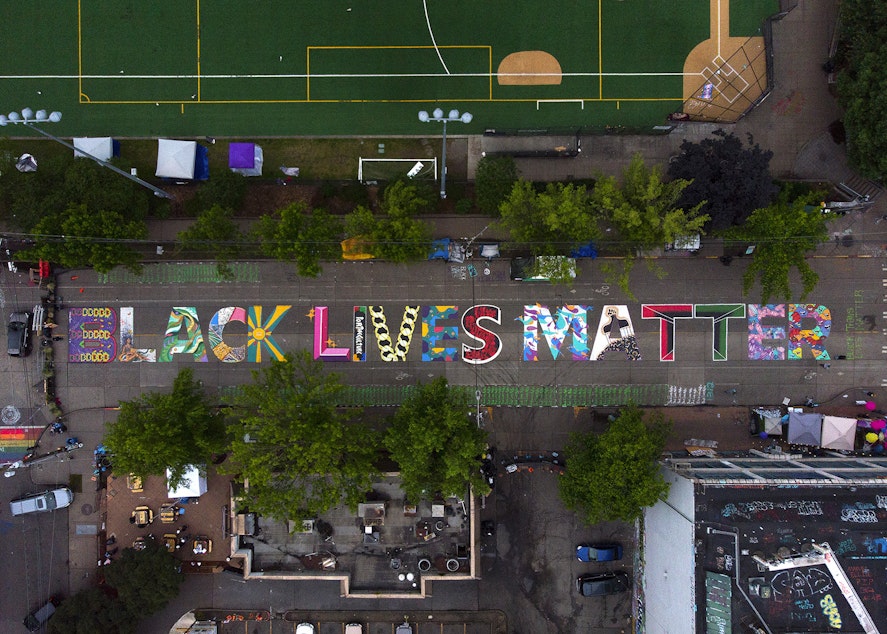CHOP: reflecting on one year after the protests that changed Seattle

A year ago protestors marched in cities around the U.S. in demonstrations against police violence following the murder of George Floyd by a police officer. Seattle area protesters converged around a few blocks on Capitol Hill that became known as the CHOP. This hour, we look back on the site and how it has a place in Seattle history. Guests include KUOW reporter Casey Martin, mural artist Angelina Villalobos, Washington State Representative Nicole Macri, Seattle Police Chief Adrian Diaz, and Attorney Sadé Smith.
Individual segments are available in our podcast stream or at www.kuow.org/record.
One journalist's experience reporting from CHOP
Seattle area protesters marched from downtown to the East Precinct building on Capitol Hill for a anti-police brutality demonstration, after Minneapolis police officer Derek Chauvin murdered George Floyd on May 25, 2020. On June 8th, protesters awoke to an abandoned precinct and they seized an opportunity. The so called CHOP would get national attention and scrutiny. KUOW reporter Casey Martin was at those protests, reporting almost 12 hours a day.
This artist's work became part of Capitol Hill
One year ago, a few blocks near Capitol Hill’s Cal Anderson Park became the center of a protest movement in an area that became known as the CHOP. While people set up camp and protestors made speeches, artists got to work on a brilliantly colored Black Lives Matter street mural that is a permanent marker of the movement. Artist Angelina Villalobos painted part of the mural.
How local law enforcement has changed one year post CHOP
After more than a week of protests and clashes Seattle Police abandoned the East Precinct, and organizers and protestors set up an autonomous zone, a part of Capitol Hill designed to be free of police. One year later, Washington State Representative Nicole Macri joins the show to talk about changes to policing at the legislative level.
Seattle Police Chief Diaz on new tactics a year after CHOP
It’s been a year since protestors established CHOP on Capitol Hill following demonstrations against police violence. Now we’re looking at the changes that have been made in law enforcement in the aftermath of these events. Seattle Police Chief Adrian Diaz gives details on how police are handling situations with new policies in place.
Sponsored
A step further - some groups call to abolish SPD
After the protests of June 2020, some people don't just want to reform the Seattle Police, or cut its budget, they want to abolish it. How would that work? And has the city taken any steps in that direction? Here to explain is Sadé Smith, an Attorney at Smith Law.


